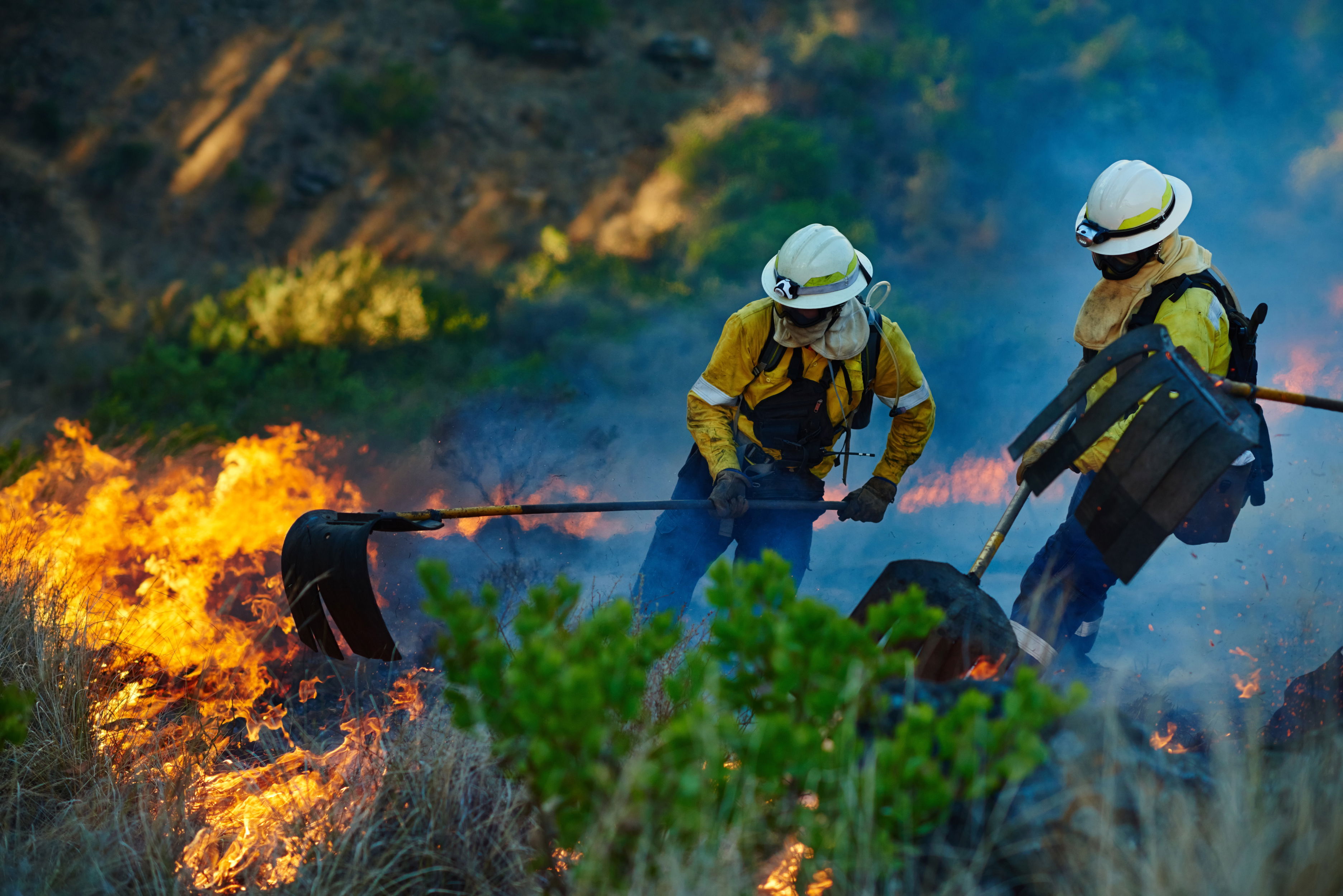Wildfire Prevention Science: Fire-Resistant Landscaping and Community Preparedness in 2025
Introduction
Wildfires have become a defining feature of 2025's climate landscape, with the "dangerous trifecta" of fire, flood, and wind risks encroaching on U.S. homes and potentially costing trillions in damages. In California alone, the 2024 fire season scorched over 1.2 million acres, underscoring the urgency for science-backed prevention.
This article explores the science of wildfire prevention through fire-resistant landscaping and community preparedness, drawing on principles of fire behavior, plant physiology, and collective action. As communities mobilize for events like Wildfire Community Preparedness Day, these strategies not only mitigate risks but also foster resilient ecosystems. We'll cover defensible space creation, plant selection, program funding, and real-world applications to equip homeowners and neighborhoods for a safer future.
ThThe science of wildfire behavior and prevention
Wildfires spread through radiant heat, direct flame contact, and embers carried by wind, with fuel load—vegetation and structures—determining intensity. Fire-resistant landscaping disrupts this by reducing fuel continuity and moisture content in plants, which slows ember ignition. Scientifically, plants with high sap or low oil resins (e.g., succulents) resist ignition longer, as their water vapor acts as a heat sink. Community preparedness amplifies this by scaling individual efforts into coordinated responses, such as fuel breaks and early warning systems. In 2025, research from CAL FIRE emphasizes "hardening" homes alongside landscape modifications to achieve up to 80% risk reduction. Understanding fire ecology—where burns regenerate soils—guides sustainable practices that prevent catastrophic blazes.
Fire-Resistant Landscaping: Core Principles
Fire-resistant landscaping, or "fire-smart" design, creates zones around structures to limit fire spread. The science hinges on plant flammability ratings: low (e.g., oaks with thick bark), moderate (grasses), and high (eucalyptus with volatile oils).
Defensible Space Zones
CAL FIRE's Ready, Set, Go! framework divides landscapes into three zones:
- Zone 1 (0-5 ft): Use non-combustible materials such as gravel or stone, and ensure that no plants are located closer than 18 inches to any structures.ne 2 (5-30 ft): Sparse, low-growing plants spaced 2-3 times their mature width; prune lower branches to 6 ft.
- Zone 3 (30-100 ft): We thinned trees and mowed grasses to break fuel ladders.ese zones leverage physics: wider spacing reduces convective heat transfer, while irrigation maintains 60-70% plant moisture to inhibit combustion. In 2025, innovations like drought-tolerant natives enhance water efficiency amid prolonged dry spells.
Soil and Mulch Science
Bare mineral soil in high-risk areas prevents ember nesting, as organic mulch can ignite readily. Science shows gravel mulches reflect heat, cooling surfaces by 20-30°F during exposure. Proper fertilization boosts plant vigor without excess growth that fuels fires.
Selecting Fire-Resistant Plants
Choosing plants involves assessing moisture retention, oil content, and growth habits. Native species excel, adapted to local climates and supporting biodiversity.
Recommended Plants by Region
- California: Manzanita (Arctostaphylos) for evergreen cover; lavender (Lavandula) for aromatic, low-fuel groundcover.
- WestIn the eastern U.S., Ponderosa pine (Pinus ponderosa) is planted with spacing, and yarrow (Achillea) is used for creating drought-resistant meadows.stern U.S.: Black oak (Quercus velutina) for shade; switchgrass (Panicum virgatum) for non-climbing fuels.
Avoid invasives like cheatgrass, which dry quickly and ignite easily. In 2025, Envu's innovations include fire-retardant coatings for ornamentals, extending safe use of moderates. Water wisely: Drip systems deliver 50% less than sprinklers, maintaining hydration without runoff.
DesDesign a Fire-Smart Landscape by integrating aesthetics with functionality.th science: Layer plants by height to avoid ladder fuels, using hardscapes like patios as barriers. Curved beds direct fire away from homes, and permeable pavers manage runoff. Community workshops, like those on Wildfire Community Preparedness Day, teach these designs hands-on. Maintenance is key: Mow annually, irrigate seasonally, and remove dead material to keep fuel low. Tools like the Firewise app track compliance.
Community Preparedness: Building Collective Resilience
Individual actions scale through community efforts, where shared resources amplify impact. The NFPA's Wildfire Community Preparedness Day mobilizes volunteers for cleanups and education, reducing regional risks by 40% in participating areas.
Key Strategies
- Fire-Safe Councils: Local groups coordinate fuel reduction, as in California's Community Wildfire Preparedness and Mitigation Division.
- Evacuation Planning: Drills and apps like AlertWildfire ensure 95% readiness.
- Infrastructure Hardening: Bury power lines and retrofit roofs, per Goal 2 of California's Wildfire Task Force.
In 2025, grants from the Community Wildfire Defense Program fund plans for at-risk areas, prioritizing tribal lands. X discussions highlight local successes, like flood-resistant landscaping tied to wildfire prep in the trifecta threat.

2025 Funding and Programs
Funding surges in 2025: CAL FIRE's Wildfire Prevention Grants allocate $100 million for landscapes and mitigation. The Living With Fire program's Prep Day grants support events, with $500,000 available. Federal Community Wildfire Defense Grants cover planning, with funded proposals emphasizing equity. Apply via portals; prioritize multi-benefit projects like biodiversity enhancement.
Case Studies: Success in Action
- Santa Clara County: Fire-safe yards with native plants reduced structure ignitions by 60% in 2024 fires.
- California Task Force Progress: The 2025 report shows 50% more homes hardened since 2021.
These examples prove science translates to lives saved.
Challenges and Innovations
Challenges include cost (landscaping $5,000–$20,000) and urban sprawl, increasing interface zones. Innovations: AI mapping for risk zones and bioengineered low-fuel grasses. Community resistance fades with education, as Prep Day events demonstrate.
Future Outlook
By 2030, integrated approaches could halve wildfire damages, per projections. Advances in remote sensing and policy will sustain momentum.
Conclusion
Wildfire prevention in 2025 blends science with action: Fire-resistant landscapes shield homes, while prepared communities endure. From defensible spaces to grants, proactive steps build hope. As one X user notes, local efforts like these save lives amid the trifecta threat—start today for a safer tomorrow.